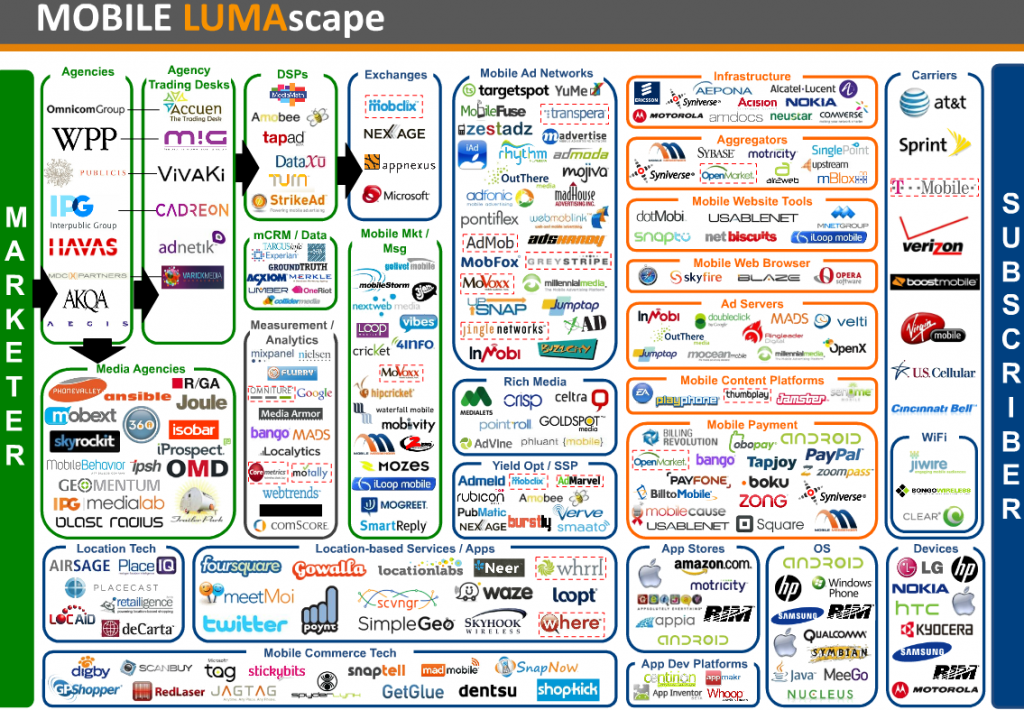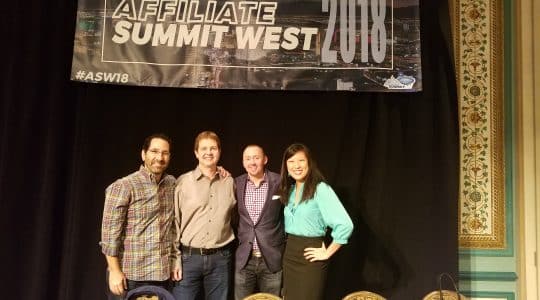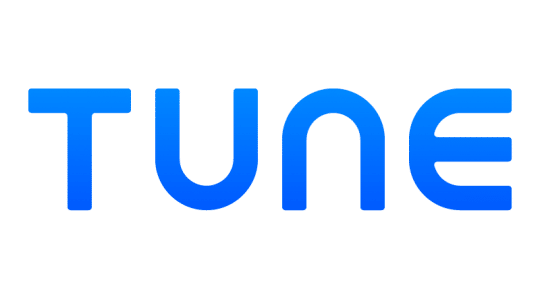If 2013 was the year of programmatic in online marketing, and 2014 was the year of mobile marketing, then 2015 will be the year mobile programmatic moves beyond the confines of a few media properties to become an industry norm.
To better understand the implications of this shift we should first define the terms “mobile marketing” and “programmatic” as they mean different things to different people. Let’s narrow the definition of mobile marketing to mean the marketing of mobile apps. Programmatic can be defined as the ability for marketers to precisely target an audience segment, and to buy that audience at scale across many media properties with very large audience reach.
Buying programmatic online
The process for buying programmatic is often thought of as complicated, primarily because:
• The tech stack for programmatic can feel overwhelming. There is an alphabet soup of acronyms (DSP, SSP, DMP) for the types of companies that make up the advertising tech stack.
• There are large number of companies in this area, and they are all connected. The LUMA chart of companies looks like a bowl of spaghetti:

Yet while the list of companies is long and the tech a bit complicated, programmatic is relatively simple to buy. Marketers who wish to buy an audience need only work with their agency, or create an account on a self-service ad platform, to actively target and bid on their chosen audience. Once engaged the process and tools for managing their campaigns are quite advanced.
The key to all of this buying automation for online is the cookie, which is at the heart of all online ad buying. Publishers have enabled cookies to be placed across their sites. Those cookies, mostly from third-party providers, effectively measure the activities of users on those sites. This user activity is then very effectively indexed, cross-referenced, and categorized into various audience segments. While the technology is complicated, the process is remarkably efficient and the ad product is remarkably effective.
Building infrastructure for mobile programmatic
For mobile marketers interested in buying programmatic the infrastructure is not nearly as advanced. The lack of cookies in the mobile app environment has hampered the ability of publishers and technologies to identify and target audience segments. The exception to this are those media companies such as Google and Twitter who have the benefit of users who are logged-in, and whose activities can be measured and targeted across apps with massive reach. Marketers have responded to these capabilities by flocking to those media companies who can target mobile audiences at scale, e.g. programmatically.
 Of course the rest of the mobile marketing industry is not content to allow a small number of companies to realize all of the gains from mobile programmatic. Publishers with apps are racing to encourage their users to log in to their apps, in addition to actively collecting appropriate types of data that can create targetable audience segments.
Of course the rest of the mobile marketing industry is not content to allow a small number of companies to realize all of the gains from mobile programmatic. Publishers with apps are racing to encourage their users to log in to their apps, in addition to actively collecting appropriate types of data that can create targetable audience segments.
Just as importantly, the DSPs, SSPs, and DMPs that power the programmatic industry are developing the capabilities to work with the app publishers to create and target available audience segments. Companies like Millennial Media, AOL, InMobi and AdColony are making hugely significant strides towards enabling mobile marketers to target and buy audience segments at scale.
What this means for you
What this means for mobile app marketers is that, as 2015 unfolds, you will have the ability to work with many media companies to precisely identify your desired audience. Rather than guessing or buying solely on context, app marketers will have a wide number of options for identifying demographic segments and audiences grouped by their behavior. Lastly, those audiences will be targetable across a wide variety of media sources and publisher sites.
These advances will not only make mobile app marketing more efficient, but more profitable. Audience targeting on online media properties is a proven method for acquiring and retaining high value customers. Though mobile app marketing differs significantly in monetization models from online, the underlying rules and methods of good marketing have not changed:
Identify a high value audience and then make every effort to reach that audience.
Mobile programmatic will make following that rule easier and more cost-efficient than ever before.
Programmatic with TUNE
For TUNE’s clients, 2015 will be an exciting time as the number of options for targeting audiences at scale will increase dramatically. In my next article, I’ll discuss how TUNE is working with the leaders in mobile advertising to help advance this transformation.
Author
Becky is the Senior Content Marketing Manager at TUNE. Before TUNE, she handled content strategy and marketing communications at several tech startups in the Bay Area. Becky received her bachelor's degree in English from Wake Forest University. After a decade in San Francisco and Seattle, she has returned home to Charleston, SC, where you can find her strolling through Hampton Park with her pup and enjoying the simple things in life.




Leave a Reply
You must be logged in to post a comment.